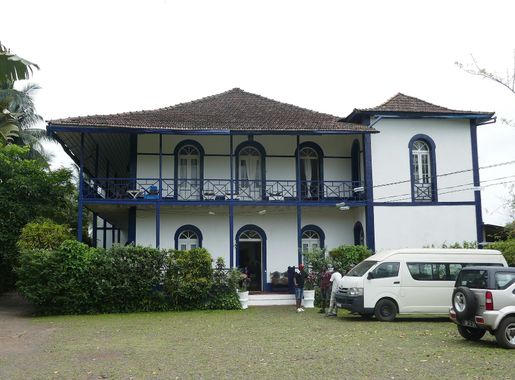
Sundy Plantation: A Journey Through Time in Sao Tome and Principe
Explore Sundy Plantation in Sao Tome and Principe, a historic cocoa estate offering colonial charm, lush gardens, rich biodiversity, and vibrant local culture.
Sundy Plantation, nestled in the lush landscapes of Sao Tome and Principe, is a captivating blend of history, nature, and culture. This former cocoa plantation offers a unique glimpse into the island's colonial past while showcasing the natural beauty of its surroundings. Visitors to Sundy Plantation can explore the well-preserved colonial architecture and learn about the plantation's role in the cocoa industry. The plantation grounds are dotted with charming buildings that transport you back to a bygone era. The main house, with its grand façade, serves as a reminder of the opulence and significance of the estate during its heyday. Nature enthusiasts will be delighted by the plantation's rich biodiversity. Wander through the verdant gardens, where exotic plants and colorful flowers thrive. The surrounding forest is home to a variety of bird species, making it a haven for birdwatchers. Guided tours offer insights into the local flora and fauna, adding an educational element to the visit. For those interested in the local culture, Sundy Plantation provides a wonderful opportunity to engage with the community. Friendly locals are often willing to share stories and traditions, giving visitors a deeper understanding of life on the island. The plantation also hosts cultural events and workshops, where you can learn traditional crafts and culinary techniques. Whether you're a history buff, nature lover, or cultural explorer, Sundy Plantation in Sao Tome and Principe promises an enriching and memorable experience.
Local tips in Sundy Plantation
- Wear comfortable walking shoes, as the plantation grounds are extensive and involve a lot of walking.
- Bring binoculars if you are interested in birdwatching; the area is a hotspot for diverse bird species.
- Consider hiring a local guide to gain deeper insights into the history and ecology of the plantation.
- Check the schedule for cultural events and workshops to make the most of your visit.
- Don't forget to try some local cocoa products available at the plantation.
Sundy Plantation: A Journey Through Time in Sao Tome and Principe
Sundy Plantation, nestled in the lush landscapes of Sao Tome and Principe, is a captivating blend of history, nature, and culture. This former cocoa plantation offers a unique glimpse into the island's colonial past while showcasing the natural beauty of its surroundings. Visitors to Sundy Plantation can explore the well-preserved colonial architecture and learn about the plantation's role in the cocoa industry. The plantation grounds are dotted with charming buildings that transport you back to a bygone era. The main house, with its grand façade, serves as a reminder of the opulence and significance of the estate during its heyday. Nature enthusiasts will be delighted by the plantation's rich biodiversity. Wander through the verdant gardens, where exotic plants and colorful flowers thrive. The surrounding forest is home to a variety of bird species, making it a haven for birdwatchers. Guided tours offer insights into the local flora and fauna, adding an educational element to the visit. For those interested in the local culture, Sundy Plantation provides a wonderful opportunity to engage with the community. Friendly locals are often willing to share stories and traditions, giving visitors a deeper understanding of life on the island. The plantation also hosts cultural events and workshops, where you can learn traditional crafts and culinary techniques. Whether you're a history buff, nature lover, or cultural explorer, Sundy Plantation in Sao Tome and Principe promises an enriching and memorable experience.
When is the best time to go to Sundy Plantation?
Iconic landmarks you can’t miss
Mucumbli
Experience the charm of Mucumbli Hotel in Neves, your perfect base for exploring the natural beauty and culture of São Tomé and Príncipe.

Praia Inhame Eco Lodge
Experience nature's beauty at Praia Inhame Eco Lodge, an eco-friendly retreat on the pristine shores of São Tomé and Príncipe.
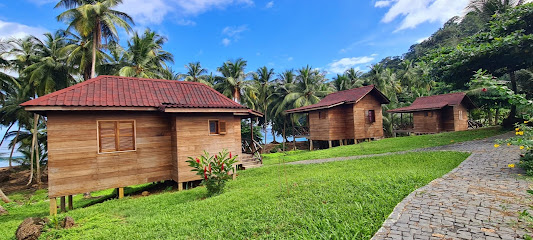
Omali São Tomé
Experience luxury and tranquility at Omali São Tomé, nestled on the stunning Praia do Lagarto with breathtaking ocean views.
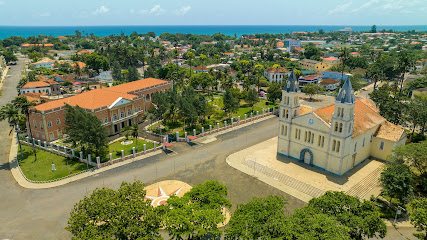
Saint Nicholas Waterfall
Explore the breathtaking beauty of Saint Nicholas Waterfall, a natural wonder in Monte Café, São Tomé and Príncipe, perfect for nature lovers and adventurers.
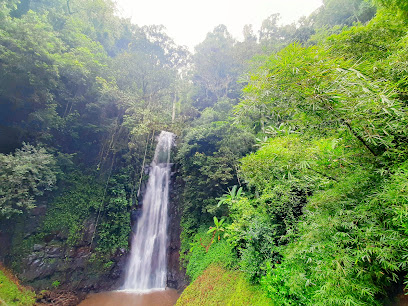
Equator Landmark
Explore the Equator Landmark in Porto Alegre, where the beauty of nature meets the intrigue of geographical history.
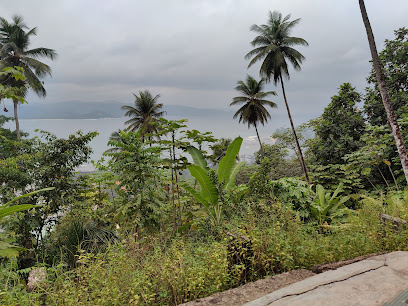
Sao Tome Island
Discover the untouched beauty and vibrant culture of Sao Tome Island, a tropical paradise in the Gulf of Guinea, perfect for adventure and relaxation.
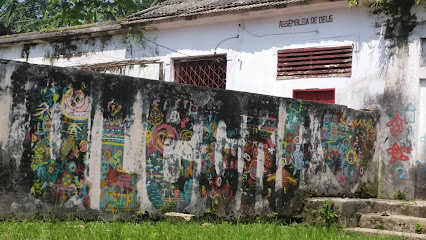
Sundy Praia Príncipe Island
Experience luxury and natural beauty at Sundy Praia, a premier resort hotel on Príncipe Island, where relaxation meets adventure in paradise.

Hotel Roça Sundy
Experience the charm of Hotel Roca Sundy, a historic plantation house in Sundi, the perfect base for exploring São Tomé and Príncipe's natural beauty.
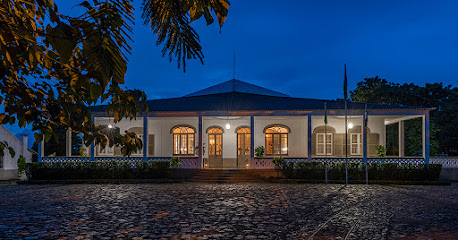
Praia das Bananas
Experience the untouched beauty and tranquil vibes of Praia das Bananas, the crown jewel of Príncipe Island's beaches.
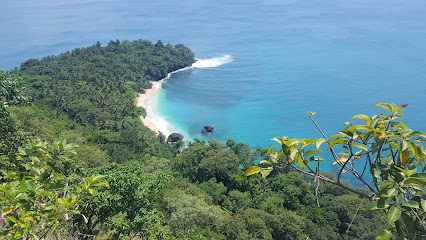
Aeroporto Internacional de São Tomé e Príncipe
Discover São Tomé International Airport, your vibrant gateway to the breathtaking islands of São Tomé and Príncipe, where adventure awaits.
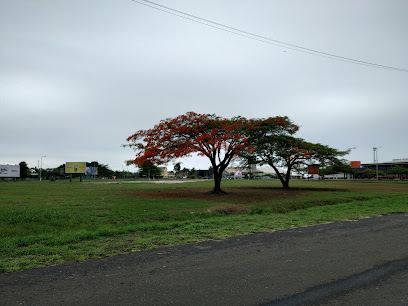
Roça Água-Izé
Explore Roça Água-Izé, a captivating open-air museum in São Tomé, where history, culture, and nature converge in a stunning cacao plantation.

Cascata de Praia Pesqueira
Experience the stunning beauty of Cascata de Praia Pesqueira, a breathtaking waterfall in São Tomé amidst lush landscapes and serene tranquility.

Lagoa Amélia
Explore the natural beauty and tranquility of Lagoa Amélia, a serene park in M. Vilela, perfect for relaxation and outdoor adventures.

Cathedral of São Tomé
Explore the Cathedral of São Tomé, a stunning architectural marvel and spiritual haven in the heart of São Tomé, rich with culture and history.
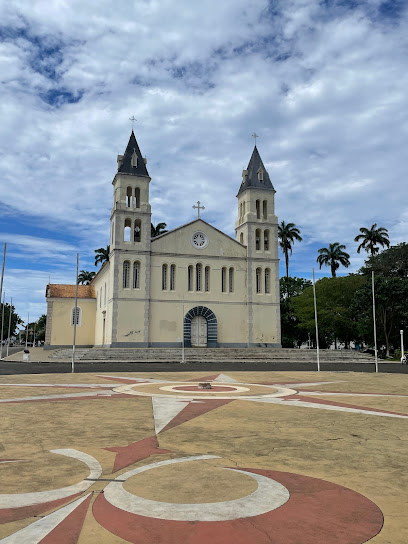
Mucumbli Explore
Discover personalized travel experiences in São Tomé with Mucumbli Explore, your gateway to adventure and culture in this tropical paradise.
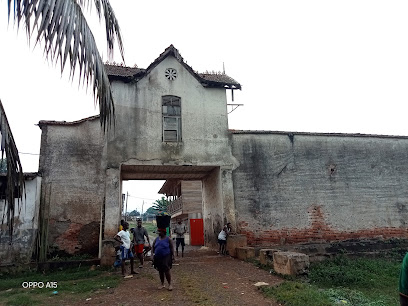
Essential places to dine
Pestana São Tomé
Experience luxury at Pestana São Tomé: your gateway to stunning beaches, vibrant culture, and unforgettable adventures on this beautiful island.

Papa-Figo
Experience authentic São Toméan cuisine at Papa-Figo, where delicious flavors meet warm hospitality in a vibrant setting.
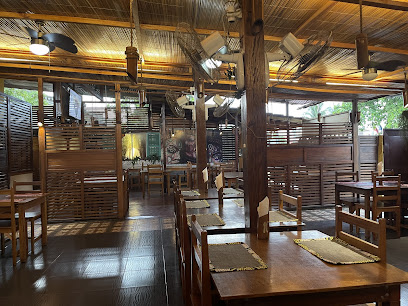
Mucumbli
Discover tranquility at Mucumbli Hotel in Neves – your perfect escape surrounded by nature's beauty.

Praia Inhame Eco Lodge
Discover tranquility at Praia Inhame Eco Lodge - a serene escape in São Tomé and Príncipe with eco-friendly accommodations amidst stunning landscapes.
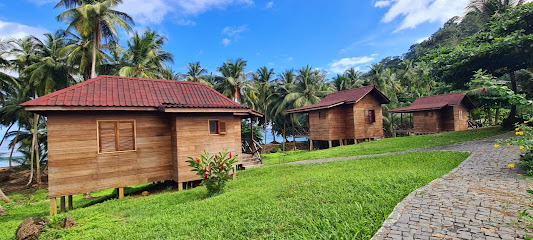
Omali São Tomé
Experience luxury at Omali São Tomé with stunning ocean views, exquisite dining options, and endless adventures on the beautiful island.
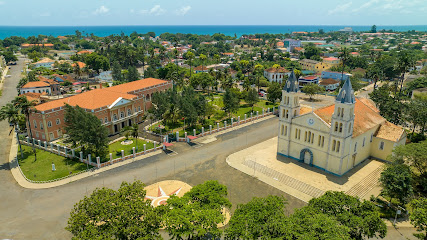
Casa Museu Almada Negreiros
Discover the vibrant artistry at Casa Museu Almada Negreiros in São Tomé – where culture meets creativity in an inspiring setting.
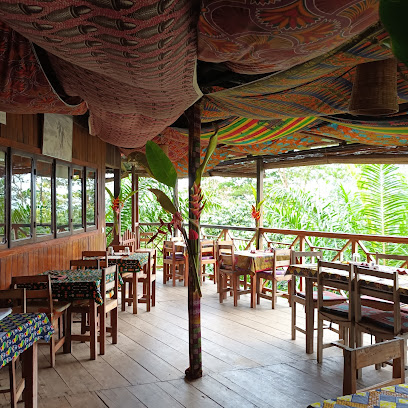
O Pirata
Experience authentic São Toméan cuisine at O Pirata - where fresh flavors meet vibrant island culture.
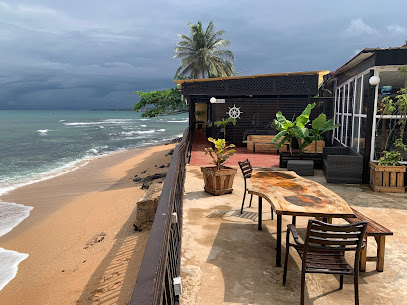
Dona Teté
Discover authentic Creole cuisine at Dona Teté in São Tomé – where every dish tells a story of flavor and tradition.
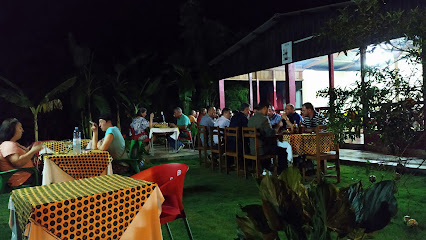
Petisqueira Santola
Discover authentic seafood delights at Petisqueira Santola in Neves, where fresh ingredients meet warm hospitality for an unforgettable dining experience.
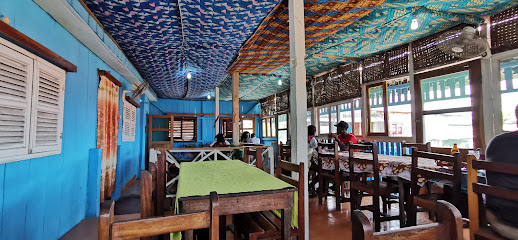
Sundy Praia Príncipe Island
Discover luxury at Sundy Praia on Príncipe Island: where pristine beaches meet lush landscapes for an unforgettable escape.

Miónga
Discover Miónga in São João dos Angolares: A culinary haven offering authentic local dishes amidst warm hospitality.
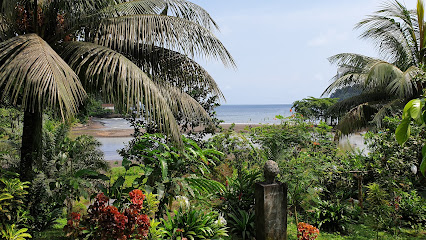
Monte Mar Restaurante São Tomé
Experience exceptional dining at Monte Mar Restaurante São Tomé with fresh local cuisine and stunning ocean views.
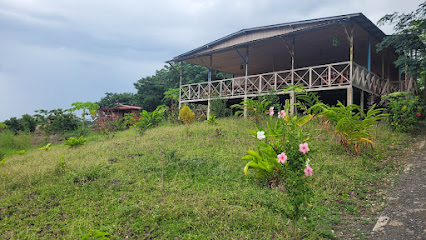
Xico's Café
Experience authentic São Toméan flavors at Xico's Café – your go-to spot for delicious meals and aromatic coffee in São Tomé.
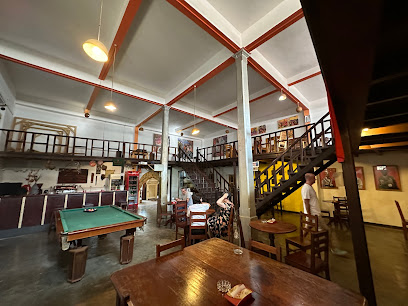
Esplanada Jasmin
Experience local flavors at Esplanada Jasmin - your go-to café in São Tomé for delicious meals and breathtaking views.
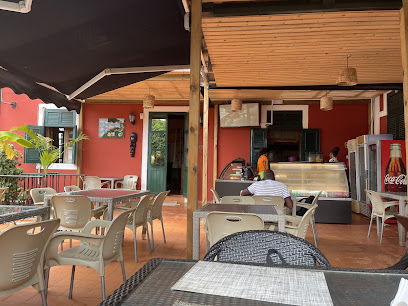
Filomar
Experience authentic Creole flavors at Filomar in São Tomé—where local cuisine meets cultural richness.
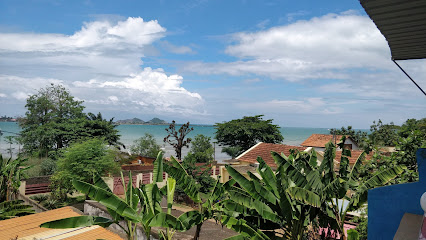
Markets, malls and hidden boutiques
Mucumbli
Experience the enchanting beauty of São Tomé and Príncipe from the comfort of Mucumbli, a tranquil hotel in Neves, perfect for relaxation and adventure.

Praia Inhame Eco Lodge
Experience the beauty of Sao Tome and Principe at Praia Inhame Eco Lodge, a serene eco-friendly retreat by the beach, perfect for relaxation and adventure.
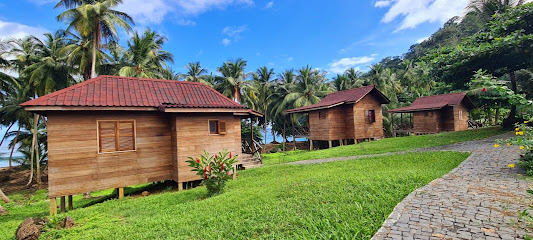
Sundy Praia Príncipe Island
Discover the tranquil beauty of Sundy Praia on Príncipe Island, where luxury meets nature in a breathtaking tropical setting.

Sweet Guest House
Sweet Guest House in São Tomé - Your cozy home away from home, blending comfort with local charm for an unforgettable stay.

Diogo Vaz
Experience the finest chocolate creations at Diogo Vaz, a cornerstone of São Tomé's rich cocoa heritage, where flavor meets tradition.
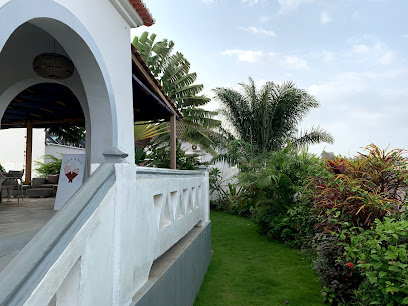
Roça Água-Izé
Explore Roça Água-Izé, an open air museum that reveals the rich cultural and agricultural heritage of São Tomé through its historic cocoa plantation.
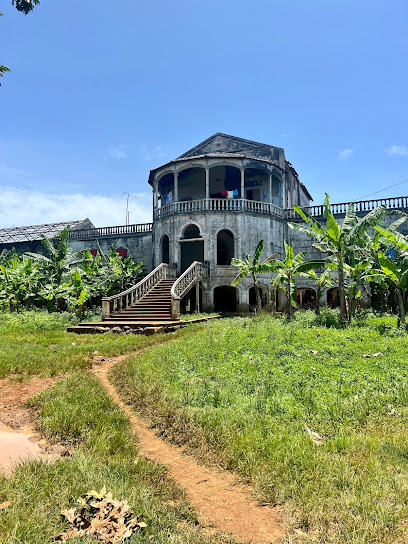
Praia Lagarto
Experience the tranquil beauty of Praia Lagarto in São Tomé, a serene beach destination perfect for relaxation and exploration.

Domus Praia Jalé
Discover the charm of Domus Praia Jalé, a tranquil bed & breakfast in Porto Alegre, perfect for nature lovers and those seeking relaxation.

Youth Square
Explore Youth Square, a historical landmark in São Tomé, where culture, community, and history intertwine in a vibrant social hub.

Valudo
Explore Valudo, the coconut oil factory in Favorita, where local flavors and culinary heritage come together to create unique experiences.
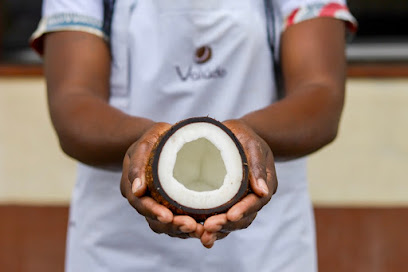
Sao-tome
Discover the essential role of the local hospital in São Tomé, a vital part of the island's community and healthcare services.
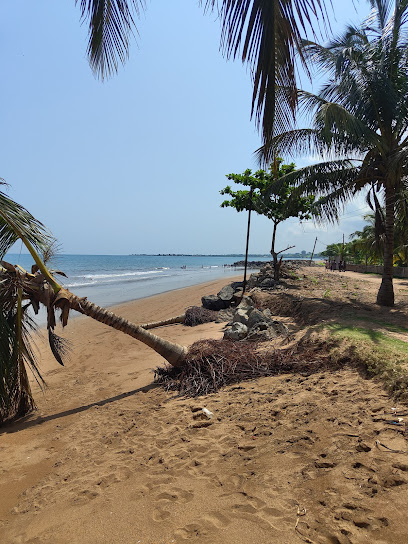
Mucumbli Explore
Uncover the beauty of São Tomé and Príncipe with Mucumbli Explore, your trusted travel partner for unforgettable adventures.

Mama África
Explore Mama África in São Tomé for authentic African home goods and a unique shopping experience that celebrates local craftsmanship.
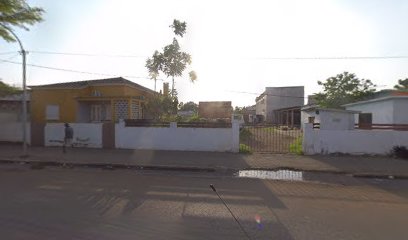
Mercado Municipal
Discover the vibrant Mercado Municipal in São Tomé, a local market bursting with fresh produce, unique crafts, and authentic island flavors.
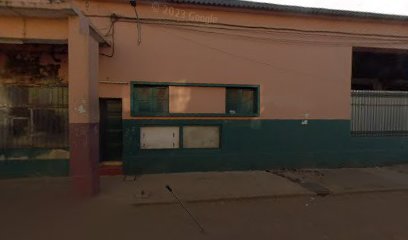
Essential bars & hidden hideouts
Pestana São Tomé
Experience luxury and vibrant nightlife at Pestana São Tomé, your tropical escape featuring exquisite dining, a spa, and lively entertainment.

Papa-Figo
Experience the vibrant flavors of São Tomé at Papa-Figo, a beloved restaurant offering authentic local dishes and a warm atmosphere for every meal.
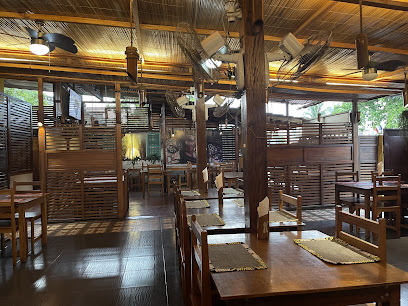
O Pirata
Experience the best of São Tomé's local cuisine and stunning ocean views at O Pirata, a top-rated restaurant perfect for every foodie.
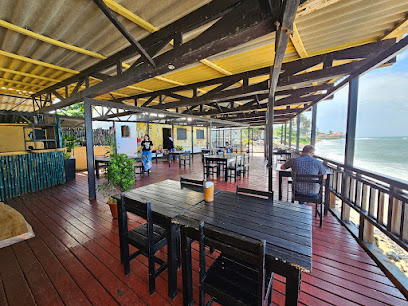
Dona Teté
Discover the vibrant flavors of Creole cuisine at Dona Teté, a must-visit restaurant in São Tomé for an authentic dining experience.
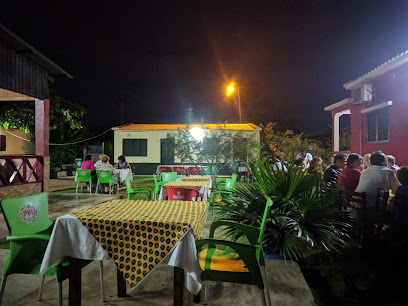
Pico Mocambo
Experience the vibrant nightlife of São Tomé at Pico Mocambo, where local flavors and lively music create an unforgettable atmosphere.
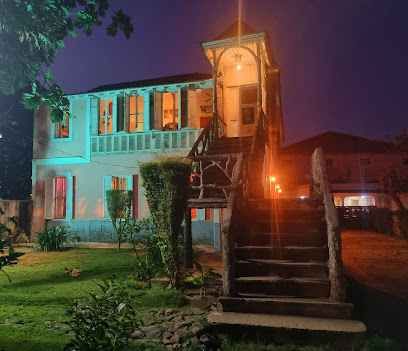
Petisqueira Santola
Experience the authentic flavors of Neves at Petisqueira Santola, a delightful restaurant offering a taste of local cuisine in a cozy setting.
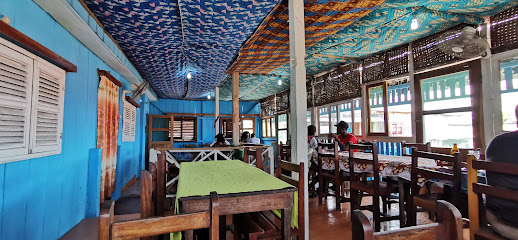
Miónga
Discover the authentic flavors of São Tomé and Príncipe at Miónga, where local ingredients meet vibrant culinary traditions.
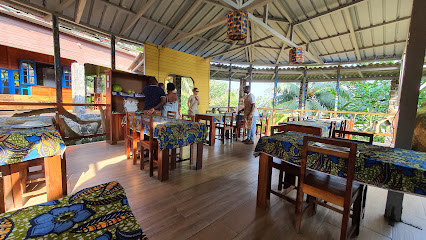
Monte Mar Restaurante São Tomé
Experience the culinary delights of Monte Mar Restaurante in São Tomé, where local flavors meet stunning ocean views for an unforgettable dining experience.
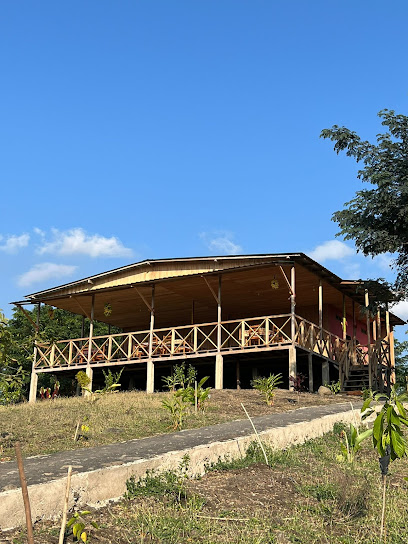
Esplanada Jasmin
Discover the charm of Esplanada Jasmin, a popular cafe in São Tomé offering local flavors and a serene ambiance amidst lush surroundings.
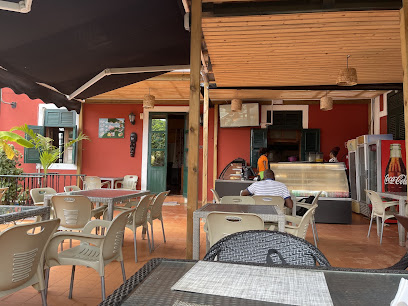
Filomar
Experience the rich culinary heritage of São Tomé at Filomar, a Creole restaurant that delights with authentic flavors and warm hospitality.
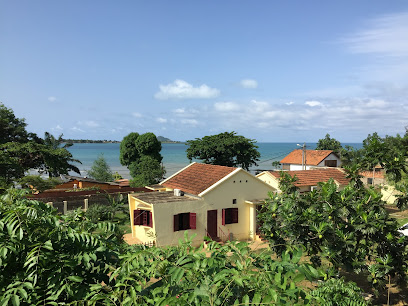
COCONUT'S BAR
Experience the best of local cuisine and breathtaking ocean views at Coconut's Bar, the ultimate beachside dining destination in Ribeira Afonso.
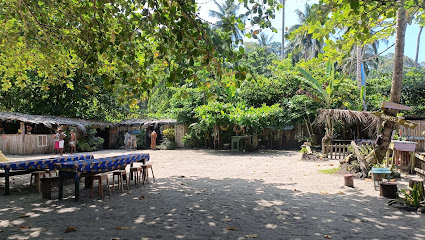
Onda Azul
Experience the flavors of São Tomé at Onda Azul, where fresh seafood meets traditional cuisine in a vibrant setting.

Petisqueira Leo
Experience the rich culinary traditions of São Tomé at Petisqueira Leo, a cozy restaurant known for its delicious local dishes and warm hospitality.
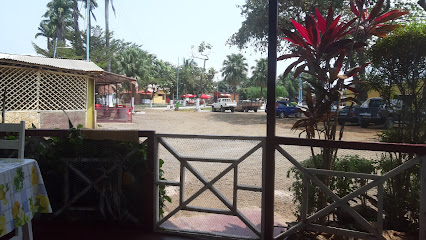
Bala Bala Bar (Praia Lagarto)
Discover a culinary oasis at Bala Bala Bar, where grilled delicacies meet stunning ocean views in Praia Lagarto, São Tomé.
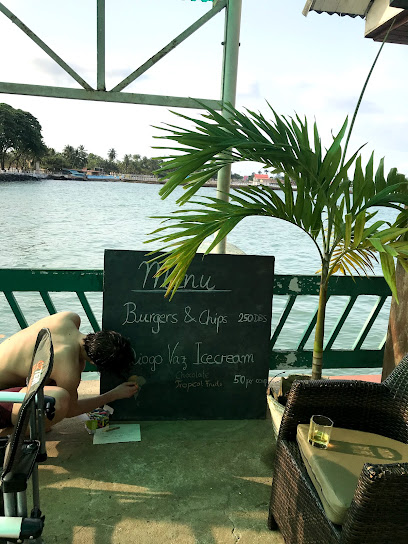
Fofokices
Discover the freshest oysters and a taste of local culture at Fofokices, Santo António's premier oyster bar.
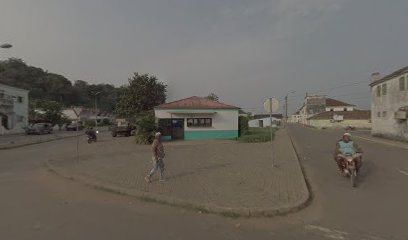
Local Phrases about Sundy Plantation
-
- HelloOlá
[oh-LAH] - GoodbyeAdeus
[ah-DAY-oosh] - YesSim
[seem] - NoNão
[now] - Please/You're welcomePor favor/De nada
[por fah-VOHR/day NAH-dah] - Thank youObrigado
[oh-bree-GAH-doo] - Excuse me/SorryCom licença/Desculpe
[kohm lee-SEN-sah/dehs-KOOL-peh] - How are you?Como está?
[KOH-moh ehs-TAH] - Fine. And you?Bem. E você?
[behn/eh vohs-ay] - Do you speak English?Fala inglês?
[FAH-lah een-GLEHS] - I don't understandNão entendo
[now een-TEN-doo]
- HelloOlá
-
- I'd like to see the menu, pleaseGostaria de ver o cardápio, por favor
[gohs-TAH-ree-ah deh vehr ooh kahr-DAH-pee-oh/por fah-VOHR] - I don't eat meatNão como carne
[now KOH-moh KAR-neh] - Cheers!Saúde!
[sow-OOH-deh] - I would like to pay, pleaseGostaria de pagar, por favor
[gohs-TAH-ree-ah deh pah-GAHR/por fah-VOHR]
- I'd like to see the menu, pleaseGostaria de ver o cardápio, por favor
-
- Help!Socorro!
[soh-KOH-roh] - Go away!Vai embora!
[vah-ee ehm-BOH-rah] - Call the Police!Chame a polícia!
[SHAH-meh ah poh-LEE-see-ah] - Call a doctor!Chame um médico!
[SHAH-meh oom MEH-dee-koo] - I'm lostEstou perdido
[ehs-TOH pehr-DEE-doo] - I'm illEstou doente
[ehs-TOH doh-EHN-teh]
- Help!Socorro!
-
- I'd like to buy...Gostaria de comprar...
[gohs-TAH-ree-ah deh kohm-PRAR] - I'm just lookingEstou só olhando
[ehs-TOH soh oh-LYAHN-doo] - How much is it?Quanto custa?
[KWAHN-too KOOSH-tah] - That's too expensiveIsso é muito caro
[EE-soh eh MWEEN-too KAH-roo] - Can you lower the price?Pode baixar o preço?
[POH-deh BAHY-shahr ooh PREH-soo]
- I'd like to buy...Gostaria de comprar...
-
- What time is it?Que horas são?
[keh OH-rahz sow] - It's one o'clockÉ uma hora
[eh OO-mah OH-rah] - Half past (10)Meia hora (10)
[MEH-ee-ah OH-rah (DEHZ)] - MorningManhã
[mah-NYAH] - AfternoonTarde
[TAHR-deh] - EveningNoite
[NOY-teh] - YesterdayOntem
[ON-tehm] - TodayHoje
[OH-zheh] - TomorrowAmanhã
[ah-mah-NYAH] - 1Um
[oom] - 2Dois
[doysh] - 3Três
[trehsh] - 4Quatro
[KWAH-troo] - 5Cinco
[SEENG-koo] - 6Seis
[saysh] - 7Sete
[SEH-teh] - 8Oito
[OY-too] - 9Nove
[NOH-veh] - 10Dez
[dehsh]
- What time is it?Que horas são?
-
- Where's a/the...?Onde fica o/a...?
[ON-deh FEE-kah oh/ah] - What's the address?Qual é o endereço?
[kahl eh oh ehn-DEH-reh-soo] - Can you show me (on the map)?Pode me mostrar (no mapa)?
[POH-deh meh mohs-TRAHR/noh MAH-pah] - When's the next (bus)?Quando é o próximo (ônibus)?
[KWAHN-doo eh oh PRO-kshee-moo/oh-NEE-boos] - A ticket (to ....)Um bilhete (para ....)
[oom bee-LYEH-teh/PAH-rah]
- Where's a/the...?Onde fica o/a...?
History of Sundy Plantation
-
Established in the late 19th century, Sundy Plantation was one of the key agricultural enterprises on the island of Principe. Portuguese colonialists founded the plantation to capitalize on the fertile volcanic soil, ideal for growing cocoa. The plantation quickly became a significant economic engine for the region, contributing to the island's prominence in the global cocoa trade.
-
Like many plantations in the colonial era, Sundy Plantation relied heavily on enslaved labor. Enslaved Africans were brought to the island to work in the harsh conditions of the plantation, enduring grueling work and inhumane treatment. This period is a somber chapter in the history of Sundy Plantation, reflecting the broader context of slavery in the Portuguese colonies.
-
Sundy Plantation gained international fame in 1919 when it became the site of a significant scientific event. British astronomer Sir Arthur Eddington conducted an experiment during a solar eclipse to test Albert Einstein's Theory of General Relativity. The successful observation of the deflection of starlight by the sun's gravity provided crucial evidence supporting Einstein's theory, making Sundy Plantation an important landmark in the history of science.
-
Following São Tomé and Príncipe's independence from Portugal in 1975, Sundy Plantation underwent significant changes. The plantation was nationalized, and efforts were made to transform it into a more equitable agricultural operation. The nationalization aimed to improve the working conditions and livelihoods of the local population, moving away from the exploitative practices of the colonial period.
-
Today, Sundy Plantation is a vital part of São Tomé and Príncipe's cultural heritage and a growing tourist attraction. The plantation's historic buildings have been preserved, and guided tours offer insights into the island's colonial past, agricultural history, and the groundbreaking scientific experiment of 1919. The plantation also promotes sustainable tourism, emphasizing the importance of preserving both the natural environment and the cultural legacy of the region.
Sundy Plantation Essentials
-
Sundy Plantation is located on Principe Island, part of Sao Tome and Principe. The nearest major airport is São Tomé International Airport (TMS) on the main island of São Tomé. From there, you can take a domestic flight to Principe Island, which typically takes about 35 minutes. Once on Principe Island, Sundy Plantation is easily accessible via a short car ride from the airport.
-
Transportation on Principe Island is limited but manageable. The most common mode of transportation is taxi, which can be arranged through your accommodation or at the airport. Some visitors prefer to rent a car or a scooter for more flexibility. Bicycles are also available for hire, providing a more eco-friendly way to explore the island. Note that public transportation is not widely available, so plan accordingly.
-
The official currency of Sao Tome and Principe is the Dobra (STN). While credit cards are accepted at some hotels and restaurants, it's advisable to carry cash, especially when visiting more remote areas like Sundy Plantation. ATMs are available in the capital, São Tomé, but may be scarce on Principe Island. It's wise to exchange money before heading to Principe or ensure you have enough cash for your stay.
-
Principe Island is generally considered safe for tourists. However, it's always prudent to take standard precautions such as not leaving valuables unattended and avoiding isolated areas at night. The local community is friendly and welcoming, but it's advisable to remain vigilant and aware of your surroundings. There are no specific high-crime areas targeting tourists, but petty theft can occur.
-
In case of an emergency, dial 112 for immediate assistance. The local hospital on Principe Island can handle minor medical issues, but for serious conditions, evacuation to the main island or another country may be necessary. It's highly recommended to have travel insurance that covers medical emergencies and evacuation. Pharmacies are available, but they may have limited supplies, so bring any necessary medications with you.
-
Fashion: Do dress modestly, particularly when visiting local villages or religious sites. Avoid wearing overly revealing clothing. Religion: Do respect local customs and traditions. Public Transport: Do be courteous and patient, as transportation options are limited. Don't expect punctuality, as schedules can be flexible. Greetings: Do greet locals with a friendly 'Bom Dia' (Good Morning). A handshake is also common. Eating & Drinking: Do try local dishes and accept food offerings graciously. Don't waste food, as it is considered disrespectful.
-
To experience Sundy Plantation like a local, take the time to explore the natural beauty of the surrounding area. Engage with the local community, who are often eager to share their knowledge and stories about the island's history and culture. Visit the local markets to buy fresh produce and traditional crafts. Don't miss out on guided tours of the plantation to learn about its historical significance and current conservation efforts. For a unique experience, consider taking a boat trip to explore the island's coastline and marine life.
Trending Landmarks in Sundy Plantation
-
Mucumbli
-
Praia Inhame Eco Lodge
-
Omali São Tomé
-
Saint Nicholas Waterfall
-
Equator Landmark
-
Sao Tome Island
-
Sundy Praia Príncipe Island
-
Hotel Roça Sundy
-
Praia das Bananas
-
Aeroporto Internacional de São Tomé e Príncipe
-
Roça Água-Izé
-
Cascata de Praia Pesqueira
-
Lagoa Amélia
-
Cathedral of São Tomé
-
Mucumbli Explore
Nearby Cities to Sundy Plantation
-
Things To Do in Sao Tome City
-
Things To Do in Guadalupe
-
Things To Do in Trindade
-
Things To Do in Neves
-
Things To Do in Ribeira Afonso
-
Things To Do in Santa Catarina
-
Things To Do in Angolares
-
Things To Do in Luba
-
Things To Do in Mbini
-
Things To Do in Libreville
-
Things To Do in Malabo
-
Things To Do in Kribi
-
Things To Do in Limbe
-
Things To Do in Tiko
-
Things To Do in Buea


